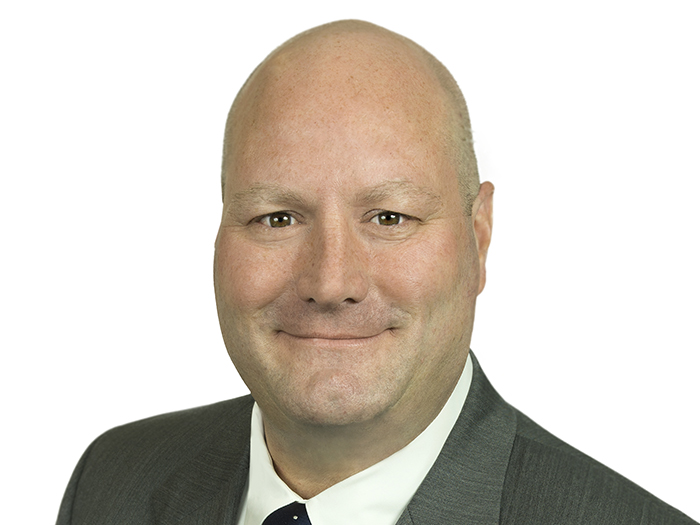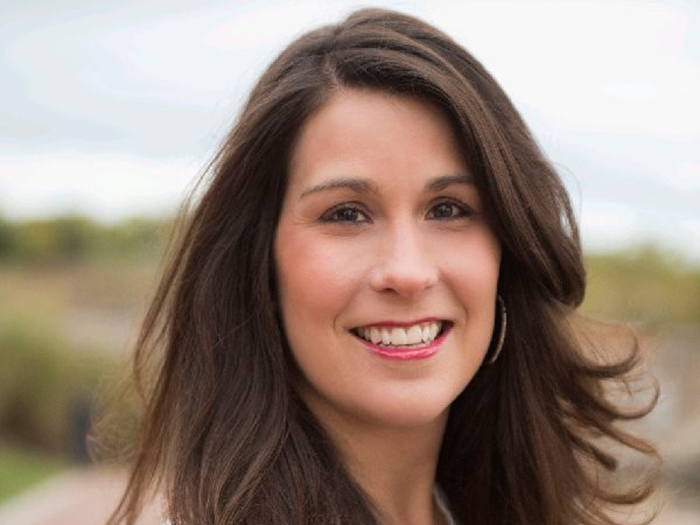11 Questions for AXA XL’s Steve Bauman

Risk & Insurance had the chance to catch up with Steve Bauman, global programs and captives director, Americas, for AXA XL.
What follows is a transcript of that discussion, edited for length and clarity.
Risk & Insurance: It seems like everywhere you turn these days we’re hearing captive formation is really rolling along quite well. What’s your take on that trend?
Steve Bauman: I would definitely agree that captive formation and utilization continues to roll along in a pretty vibrant manner, maybe more than in the history of captives.
It’s a really dynamic time now in captive formation, and we see a lot of growth in all aspects of captives.
It’s an exciting place to be.
R&I: Why are we seeing this?
SB: I think one aspect is the firm market or the hard market; there’s no doubt. I mean, throughout the history of captives, that drives captive formation and increased interest in captives.
If you look closely at the numbers though, the increase in formations started even before the hard market.
There was a strong desire by insureds to begin to take more of an interest, more control, and more of an effort to retain more risk than they ever had before.
I like to call this “The New Resiliency.”
Before the hard market hit, it was the emerging markets and the emerging risks that were developing out there. And that’s another catalyst for captive formation; emerging risk, new risks, and insureds waiting for the insurance companies, the insurance market to respond to it, but maybe trying to be out in front of it and get out in front of these emerging risks with a captive utilization.
R&I: Can you speak to where we’re seeing the formation in terms of the size of companies forming captives. Is there a discernible trend there?
SB: Captives have definitely trickled down to a lot more companies for a couple of reasons.
One, a lot of the big companies already have captives so they kind of saturated with captives, but there’s a lot of new companies out there.
It’s almost a matter of fact now that big companies think they need a captive and move in that direction.
I don’t like the term “alternative risk” for captives, because they’re so widespread, at what point are they the norm and not some alternative?
If you look at the Fortune 1000 companies, I don’t want to say they all have captives, but the vast majority of them do and have for decades. When a company becomes a certain size, it’s certainly thinking about that.
It’s also that captives aren’t just for the big companies anymore, they’ve trickled down to upper-middle market and middle market type companies.
I think that has to do with the efficiencies that have gone on in captive formation, captive utilization, and the running costs of captives have gotten a lot more efficient. That lends itself to much smaller companies that don’t necessarily have the big dollars that the big companies used to put up to do the feasibility studies and get one off the ground, so I think that’s working in that way too.
The different vehicles that are available lend themselves to more users that are smaller companies, like the group captives. Group captives are a growing trend.
At AXA XL, not, only do we have many years of experience with groups, but we also have an initiative in that area around new group captive growth.
That’s a catalyst, as well as the cell companies, the cell captives that are out there and available in a lot of captive domiciles. That’s certainly a catalyst for smaller companies utilizing a captive-like product in the captive cells and group captives.
R&I: The way people are using captives continues to expand. Do you feel risk managers are getting more creative in their use?
SB: I started my career more than 35 years ago in the captive business working for Fred Reiss, who’s recognized as the father of captives.
Captives now are more entrepreneurial and more innovative than they have ever been, which I think is great.
So many more coverages are going into captives, so there’s that dynamic going on.
And the creativity of using captives as a profit center is very popular, so I think that has a different twist on captive utilization than maybe the traditional older captive.
There’re just a lot of things brewing around the captive utilization that’s really interesting and fascinating.
R&I: Is it true that we’re seeing more of a connection between the programs businesses and captives, and that our managing general agents are showing a lot more interest in captives?
SB: I believe it is. We have a programs group that has just moved over from our reinsurance group into our insurance sector, so I’m re-engaging with them around captive utilization.
But I think the traditional programs are certainly a good spot for captive utilization, because the MGAs and these purveyors of these structures, they tend to have the more profitable or the cleaner type of clients in them, which lends itself to captive utilization, because everybody who owns a captive wants to make money in their captives through the underwriting process.
You want to make sure you stay away from the not-so-good players and have more of the good players in that vehicle. It lends itself to that just as a basic premise of captives and programs, and I think, again, it’s a way for various folks to make some good profit around these.
R&I: Can we speak to where we’re seeing non-traditional lines or risks coming into captives?
SB: We’re going to continue to see demand around cyber and climate in captives. We’re starting to see growth in the industry and demand for it.
As those risks continue to develop, I think you’re going to see a lot more captive utilization in those areas, which I think is fascinating and just a lot of good opportunity around risk for folks to use their captive in these areas.
Programs and the MGAs that are getting involved, I think you’re going to see more of these kind of captives looking at areas of profit. And I think working with warranty type business and control third party business is going to continue to increase. That’s going to be a vibrant area moving ahead as well.
R&I: And in traditional lines — professional liability, auto, GL, workers’ comp — are there trends there?
SB: That continues to grow, because those risks and the risk of losses, those exposures, are not going away; they’re only growing.
With that, the captives that you put those covers in, the insureds that put that business into the captives, we’re going to see continued growth.
There might be a little back tick because of the economic slowdown that we’re seeing currently, but it will grow and it will grow proportionately bigger than the economy grows, because the risk is growing as well.
R&I: Where are you seeing a most marked formation growth in terms of which domicile, the domestic or foreign?
SB: I haven’t looked at all the numbers around this yet, all the completed numbers from last year, but just the feel I get is it’s happening everywhere.
There’s so many domiciles that come out with press releases that showed a record year for 2021 and then continued record pace for 2022, on top of significant growth in 2020, so I think it’s everywhere.
I would be hard pressed to be able to think of a domicile that has declined, except for maybe more movement towards the U.S. states in coming onshore, or U.S.state-based — I don’t want to leave Hawaii out by saying onshore, because I think everyone is showing growth, which, again, I think is a great thing for the industry.
R&I: You’ve been involved in captives for 35 years. What is it about the work that you find engaging?
SB: Like I mentioned, captives are as innovative, entrepreneurial as they’ve ever been, so that’s always interesting. The fact that they involve anything and everything in the risk realm is another positive.
The growth areas in emerging markets is highly interesting, just the new ideas that people come up with around looking for ways to make more profit in their captive as a profit center.
There’s no shortage of risk in the world. And now captives have expanded so much to include all risks all the time, it leaves it open to everything.
So when you have potentially everything as your plate, how can’t it be interesting?
R&I: What do you think the particular calling card is for captives in terms of appeal to new talent or a talent that may be switching industries?
SB: It has broad appeal because of the items I just mentioned. I know within the captive industry, there is a push to get younger generation involved more in captives.
It’s worth the effort to do that. I think folks will see this as a really fruitful path forward as a career.
And it’s not only because of all the nice locations that captives have popped up in over the years, when you start talking about conferences in Bermuda and Hawaii and Vermont. There’s a global theme, too, that captives are a global concept.
I think that has an appeal to it as well.
I’ve traveled the world with clients, talking with them about captives, and I think that has an enormous appeal for people in the marketplace today.
R&I: Is there any last thought you’d like to share with our audience?
SB: As I’ve aged in my career a bit, I do think back to a lot of the folks who I worked with in my younger years and just being so appreciative of all the expertise that I was around for.
I came into the business not even knowing what a captive was and knowing a little bit about insurance.
When I graduated from college, I knew I needed car insurance and I knew how expensive it was and that was about it, right? Then to get into the ground floor of captive utilization at the time, I worked with so many captive experts of those days.
I look back on that so favorably now, thinking what a treasure it was for me to have that experience with all those folks in the early days of captives and how invigorating it was.
I feel the same way now.
I appreciate young folks coming into the business and having the aspirations that I did way back when, and I enjoy working with them. So it’s a pleasure. I hope I’m as enthused and invigorated as I was back then, because it’s a great place to be.
I also wanted to mention the advantage of getting back to face-to-face meetings. I think being back out there is invigorating. Being cooped up for a couple years might have slowed things down a bit, but I think it’s great now that we’re opening up and everybody’s getting out there and talking more about it, which I think just kind of spurs more creativity in the marketplace. &










